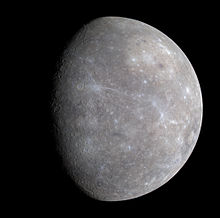User:Zkullzora

MERCURY:PLANET ONE
Mercury is the smallest and closest planet to the Sun in our solar system. Here are some key facts about it:
Size and Composition: Mercury has a diameter of about 4,880 kilometers (3,032 miles), making it roughly the size of the Moon. It is a rocky planet with a large metallic core, which accounts for about 75% of its mass..
Orbit: Mercury has an eccentric orbit and takes about 88 Earth days to complete one revolution around the Sun. Because of its proximity to the Sun, it experiences extreme temperature fluctuations, ranging from about 430°C (800°F) during the day to -180°C (-290°F) at night.
Surface: The planet's surface is heavily cratered, resembling the Moon. It has no atmosphere to speak of, which contributes to these temperature extremes and allows for the preservation of impact craters.
Day Length: A single day on Mercury (the time it takes for the planet to rotate once on its axis) is about 176 Earth days long. This means that a day on Mercury lasts longer than a year on Mercury! Exploration: Mercury has been visited by two
spacecraft: Mariner 10, which flew by the planet in the 1970s, and MESSENGER, which orbited Mercury from 2011 to 2015, providing detailed information about its geology, magnetic field, and atmosphere.
Atmosphere: Mercury has a very thin atmosphere composed mostly of oxygen, sodium, hydrogen, helium, and potassium. This tenuous atmosphere cannot support weather systems or life as we know it.
greek and roman background: mercury is the the roman form of Hermes the god of speed,theives and the messengers of the gods
Magnetic Field: Mercury has a weak magnetic field, about 1% the strength of Earth's. This is somewhat surprising given its size, and scientists continue to study the reasons behind it. Overall, Mercury is a fascinating planet with extreme conditions and a unique place in our solar system.
